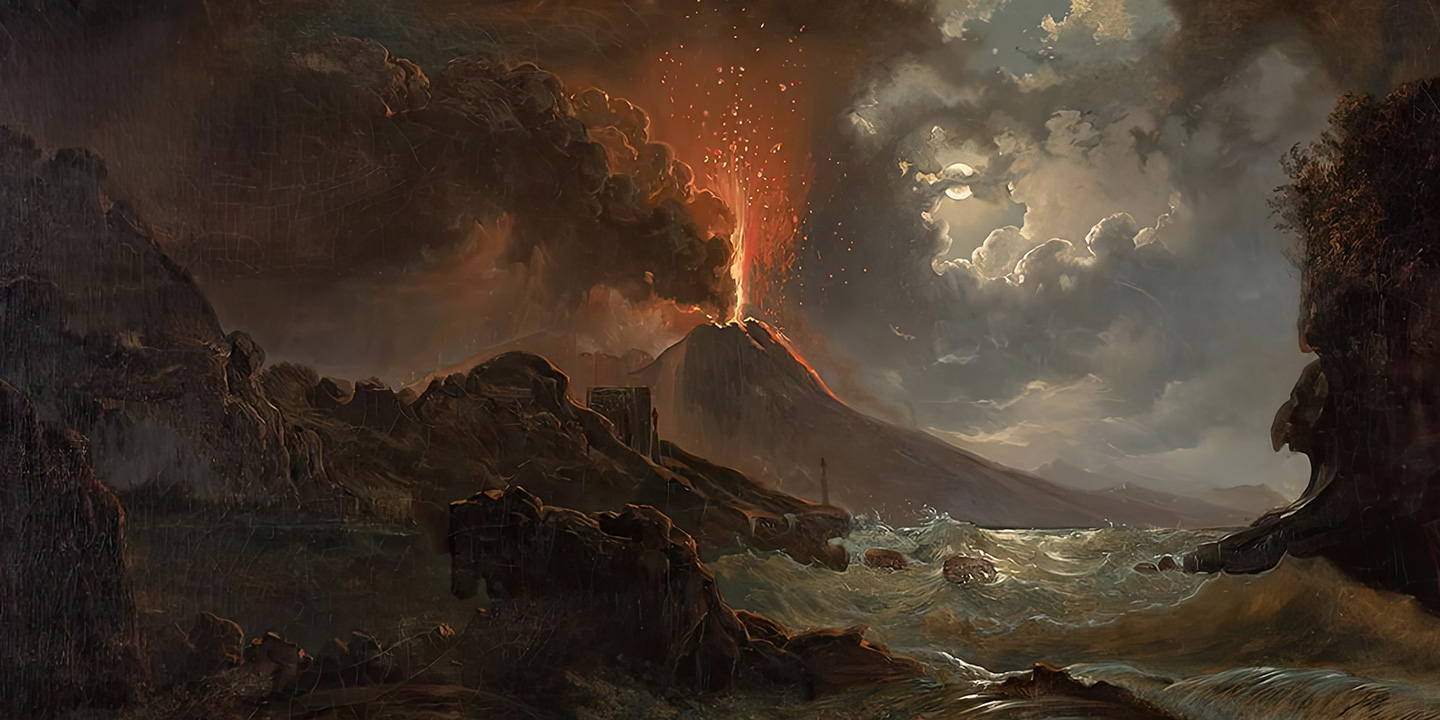
Unsealing Ancient Mysteries
Brent Seales MS’88, PhD’91 may rewrite history with a technology that can read ancient scrolls buried for 2,000 years.
Odysseus overcame many obstacles during his 10-year voyage home. The hero of Homer’s ancient epic The Odyssey might have a modern-day counterpart — computer scientist Brent Seales MS’88, PhD’91.
A professor at the University of Kentucky–Lexington, Seales has made it his life’s work to accomplish a seemingly impossible task — to “virtually unwrap” hundreds, possibly thousands, of priceless scrolls that were buried and carbonized when Mount Vesuvius erupted in AD 79.
Sixty feet of superheated gas and rock smothered the coastal Roman resort town of Herculaneum in the Bay of Naples. Author Pliny the Younger fled the cataclysm and described it this way: “A dense black cloud was coming up behind us, spreading over the earth like a flood. Many besought the aid of the gods, but still more imagined there were no gods left, and that the universe was plunged into eternal darkness for evermore.”
Julius Caesar’s father-in-law, Lucius Calpurnius Piso Caesoninus, was likely the original owner of a three-story villa there. Statesmen like Piso often had libraries that contained as many as 40,000 scrolls.
Diggers discovered about 800 of those papyri, now known as the Herculaneum scrolls, in 1752. They look like charred, shrunken, burned pastries. At first scientists tried to unroll the brittle relics, a futile effort that caused many to crumble. “Turn’d to a sort of charcoal, so brittle, that, being touched, it falls readily into ashes,” wrote one early examiner.
Scholars hope Piso’s library, the only intact ancient library ever found, may contain lost treasures — plays by Aeschylus and Euripides, poems by Sappho, histories of Rome by Livy, and possibly works that document Christianity’s earliest years.
By all accounts, this find ranks with the Dead Sea Scrolls as one of the greatest discoveries in the history of archaeology. And Seales has led the way to tease out its mysteries.
Helpers on the Journey
Homer dubbed Odysseus a “man skilled in all ways of contending,” a description that fits Seales. He, too, has overcome daunting troubles. Technological riddles in the fields of AI and x-ray tomography stymied him. Museums denied him access to materials. In one case, his scholarly collaborators claimed success without mentioning him.
Through his resourcefulness, patience, and collaborative spirit, Seales won powerful allies — among them, Silicon Valley entrepreneur Nat Friedman. It was Friedman’s idea to start the crowd-sourced Vesuvius Challenge, an international competition that awards prizes to teams who succeed in reading the Herculaneum papyri. In early 2024, a winning team revealed five percent of a scroll written by Piso’s resident scholar Philodemus, a follower of philosopher Epicurus.
Seales believes that in a year or two, he and his team will overcome remaining hurdles and enable classicists to read all the scrolls. The ultimate goal? Exhume and decipher thousands of still-buried papyri.
When his odyssey began 30 years ago, no one was working on this. “No one else cared. People thought it was impossible,” he recalls. “I didn’t feel like an underdog. I just felt like a true pioneer. It was real exploration.”
The Road to Wisconsin
Seales speaks from the heart. A balding bear of a man with bushy black eyebrows, he has sparkling eyes, an infectious low-key confidence, and an easy way with words.
He grew up in the 1970s and ’80s, when personal computing was just beginning to take off. Raised in a modest household in the village of Springville in western New York, he caught tech fever at a young age. “For me, computing represented the paramount American experience where you have upward mobility. You could have pioneering exploration. You could have everything the New World is about,” he says.
A lover of math and music, he played violin at his church. The University of Louisiana–Lafayette gave him a double scholarship to study computer science and music.
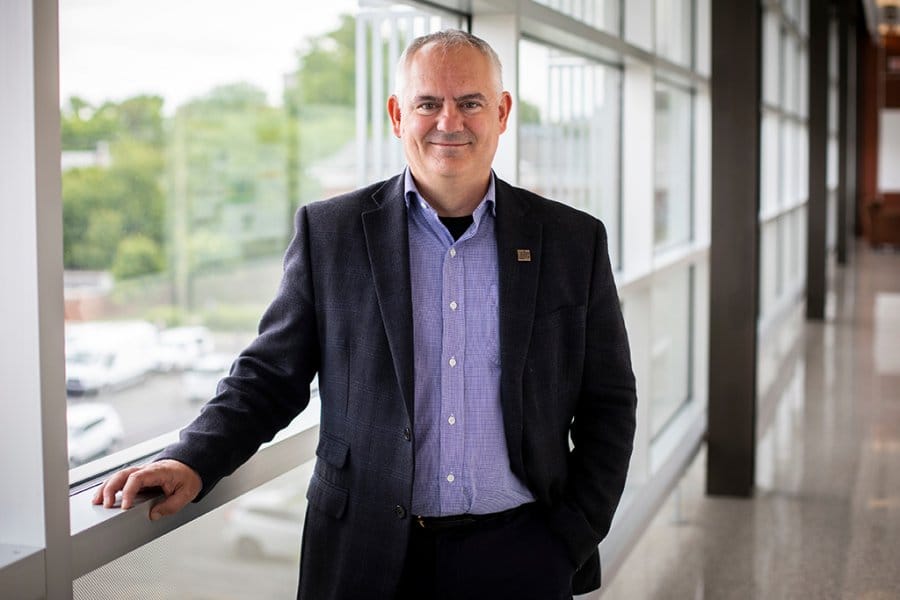
Seales says that scholars should soon be able to read all 800 of the Herculaneum scrolls that have been unearthed so far. But the ultimate goal is to exhume and decipher thousands more papyri from a library that ranks along with the Dead Sea Scrolls as one of the greatest finds in the history of archaeology. UK Photo
For graduate school, Seales says, “I shot for the moon. I couldn’t imagine anything better than to be at Wisconsin.” Strapped for money when he applied to the university, he prayed it would “just let me work and pay my own way.” Unlike other schools, the UW gave him a four-year guarantee of funding.
At UW–Madison, Charles Dyer, professor emeritus of computer sciences and biostatistics and medical informatics, was Seales’s doctoral thesis adviser. It was an ideal match. Both men were young. Dyer was only 10 years older than Seales. Both craved long-distance ordeals. Dyer ran marathons. Seales thrived in Madison’s cycling culture and pedaled in weekend races.
Even then, artificial intelligence’s potential fascinated Seales. Dyer was one of the first scientists to study computer vision, an AI-related field that gripped Seales’s imagination. Under Dyer, he wrote algorithms that transformed two-dimensional photos into 3-D images, a technique Mars Rovers would use to traverse the Red Planet without commands from Earth.
“I give Brent a huge credit for sticking with his research and making steady progress for years without a lot of big reinforcement,” says Dyer.
Perfecting X-Ray Vision
How does Seales get scrolls that look like flame-broiled croissants to surrender nearly 2,000-year-old secrets?
First, using a technology similar to that used by a computed tomography (CT) scanner, he takes a 3-D scan of a scroll. Its beam slices the scroll into about 15,000 vertical images. Each unimaginably thin slice is like a tree ring. It reveals how heat and pressure distorted the scroll’s overlapping wraps.
Then he virtually flattens the scroll. So far, this has required researchers to trace distorted rings, a process Seales hopes will soon be automated. Correct tracing of rings lets his software create an accurate 3-D image that is flattened to two-dimensions.
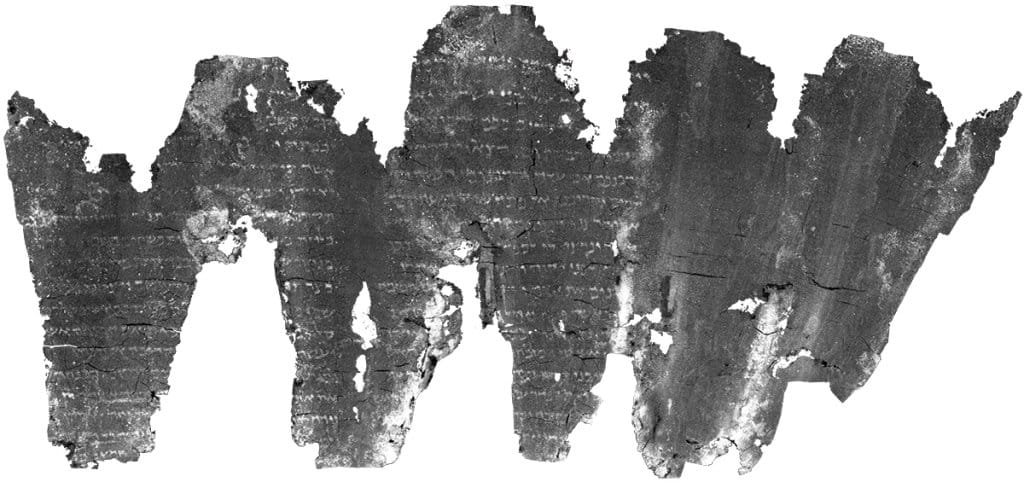
Seales used “virtual unwrapping” to read the text from the ancient En-Gedi scroll, revealing it to be the beginning of the Book of Leviticus. It’s one of the oldest Hebrew biblical texts ever found, outside of the Dead Sea Scrolls. Brent Seales, University of Kentucky
Finally, because the Romans used an ink that scans cannot capture, Seales employs machine learning to detect nearly invisible texture differences in blackened papyrus, thus making letters visible.
His saga of discovery has been as convoluted as one of his scrolls. It began in London’s British Museum in 1995 with a digital imaging project to improve readability of the earliest copy of Beowulf. Seales used a NASA technique called MSI, multi-spectral imaging, to make letters pop out against their background. This happens because iron-based ink reflects light, especially ultraviolet light, differently than a background of parchment, vellum, or papyrus.
Based on that work, he wrote a paper about digital restoration. The result? “No one cared,” Seales says. “But I still look at it as one of those turning-point papers for me, because I articulated the principles around digital restoration that were going to be amazing. In that paper, I wrote that the pinnacle of the restoration would be complete virtual unwrapping.”
Seales had a brainstorm. He had seen enough wizened documents to know the forces of time and temperature often caused pages to grow wavy. Sometimes the distortions were so bad they hid letters.
He was working on a ninth-century vellum copy of The Consolation of Philosophy by Boethius. Voilà — Seales performed a virtual flattening. His smoothing of the manuscript made letters reveal themselves for the first time in centuries.
The Odyssey Takes a Detour
Seales learned about the Herculaneum scrolls when classicist Richard Janko at the University of Michigan contacted him in 2004. He told Seales about their horrible condition, that others had destroyed some, and asked if he could make them readable.
“I knew instantly — instantly — that if it could be solved, it would be amazing, and the world would think it was amazing,” says Seales. With some difficulty, he got funding to proceed.
To move forward, Seales needed his own CT scanner, one that was portable. He and a partner at Iowa State University tried but failed to build one he could bring to the field to collect his own data. So Seales decided to partner with the Belgian company SkyScan to use this cutting-edge technology.
In 2005 at Oxford, he gave a talk to the Friends of Herculaneum Society. He told them that since the late 1970s, Egyptologists had put mummies in CT scanners. Since scrolls were also wrapped, surely they could be unspooled. All he and his students had to do was write software to interpret the machine’s data in combination with the imaging technology he had started to use 10 years earlier with Beowulf.
To demonstrate his proposal, he made a scroll, lettered it with iron-based ink, and scanned it. The result showed the scroll unrolling with letters visible on its surface.
Next, Seales asked the National Library in Naples, where most of the scrolls are kept, if he could perform similar magic there. “It sent me a response that didn’t say, ‘No.’ It said, ‘Hell, no.’ But it was in Italian, so it sounded better than that,” says Seales.
Undaunted, he successfully approached the Institut de France, which also held scrolls. With a National Science Foundation grant, Seales convinced SkyScan’s founder, the Russian physicist Alexander Sasov, to send his portable CT scanner to the academy in 2009, and he was able to scan two scrolls.
He was coming off a period of “unbridled enthusiasm,” but the results crushed him. The internal complexity of the scrolls “broke” his software. The layers inside the scroll were far from uniform. “They were all tangled and mashed together. My software could not follow them reliably,” he says.
There was another problem. The Romans used carbon-based ink, not ink with an iron base. The letters remained invisible. “I didn’t know what to do. It was a deeply discouraging moment,” he says.
Divine Intervention
In moments of doubt, Seales tried to take comfort from William Wordsworth’s poem SeptemberSeptember, 1819, which reads:
O ye, who patiently explore
The wreck of Herculanean lore,
What rapture! could ye seize
Some Theban fragment, or unroll
One precious, tender-hearted scroll …
“But in fact, the scrolls are not tender-hearted scrolls,” he says. “Wordsworth was wrong. They’re hard-hearted scrolls. Hard-hearted.”
For the next few years, progress was slow. Seales found inspiration — and new collaborators — in Paris in 2011 when he was invited to join forces with the Google Cultural Institute. Since renamed Google Arts and Culture, it creates services to boost digital access to the arts.
“We came along at a time when Brent was at a dead end,” says Steve Crossan, who ran the Google project. He felt sure the Kentucky professor would overcome his obstacles. “He was completely tenacious, and he never gave up. It tends to be the case that if you don’t give up, eventually you succeed.”
Both Crossan and Dyer agree that a key to Seales’s success is his collaborative spirit. “He doesn’t require that he owns the whole of the solution,” says Crossan.
“In the research area,” Dyer says, “people are often very protective of their own work. Not Brent.”
For the next few years, Seales improved the quality of his algorithms so they could conquer the complex convolutions inside scrolls. Then came what some might call divine intervention — Israeli archaeologists asked him to virtually unwrap a carbonized parchment scroll from the ancient town of Ein Gedi. It turned out to be a portion of the Book of Leviticus.
Meanwhile, Seales continued to attack the ink-readability problem. He explored using x-ray phase-contrast tomography, which can reveal minute changes in density in a material. Because of the difficulty of getting permission to use such a machine, he teamed with European scientists who could get the go-ahead.
Disappointment hit again. The scholars he trusted published a paper — without including his name — that claimed they had solved the problem of seeing non-iron-based ink. The media reported the Herculaneum scrolls could now be read. But when Seales studied his ex-colleagues’ data, he realized they were faulty. They had achieved nothing, he says.
Once again, he found himself profoundly discouraged, “because I knew those people. I had worked with them under the assumption we’d all be working together, and they cut me out so they could run forward,” he says.
A Triumphal Moment
Meanwhile, in Israel, Seales’s supercharged algorithms worked. He could virtually unwrap the scroll, and, luckily, scannable metal was in the Biblical ink. The scroll turned out to be one of the oldest copies of the Book of Leviticus and dated from the third or fourth century AD. The subject of the first chapter? Burnt offerings.
With the National Library in Naples continuing to block Seales’s access to its treasure house of scrolls, he won permission from Oxford’s Bodleian Library to scan a Herculaneum fragment known as P. Herc. 118 for signs of ink. This was not a scroll, but bits of a scroll glued to tissue paper.
The letter c could be seen with the naked eye against the papyrus background. The problem was getting the computer to recognize it. “We made the letter appear from the tomography after training the method to recognize the evidence of the ink,” he says. “Building the method to make it visible from the tomography alone was the big breakthrough, because we knew that for full scrolls, we would only have the tomography for the inner layers, not actual photographs.” This was the triumphal moment. Now Seales knew that entire scrolls could be read.
By this time, he had realized that AI and machine learning were “the rocket fuel” that would vastly speed reading of invisible ink. “In 2015 when I did experiments with AI, I realized it was going to be a game changer,” he says. “It was the key that unlocked everything.”
The man who helped turn the key was Friedman, the former CEO of GitHub, Microsoft’s open-source platform for software developers. During the COVID lockdown in 2020, Friedman had spare time. He became curious about imperial Rome. Soon he was baking Roman-era bread and learning about the Herculaneum scrolls.
“I thought Brent’s project was incredibly cool,” says Friedman. “I wanted to follow along and be a fanboy.”
In 2022 he invited Seales to his hush-hush Frontier Camp, a secretive gathering of techie wizards in the northern California woods. The goal? Win funding for Seales or at least win offers of help.
When the duo struck out, Friedman proposed the Vesuvius Challenge, with first prize going to the scholar who could read four passages of 140 characters. Within months, three college students shared the $700,000 honors. The 2024 prize dramatically ups the challenge — it goes to a competitor who can decipher 90 percent of four scrolls.
Like Seales, Friedman believes all the scrolls will be readable in short order, once the hand-tracing of wraps inside the scrolls is automated.
Hoping for “New Arrivals” in Roman Library
Seales grew up in what he calls “a very strong and devout Christian tradition.” He wants as much ancient knowledge translated as soon as possible, but his deepest hope is to find early Christian writings.
“My passion is more on religious material from the era, because the first century was the cradle of Christianity, a phenomenal point in human history.
“This villa gives absolutely no indication there would be Christian material there, but, you know, you walk into any library, and you pick a book randomly off the shelf. How do you know what you might get?” he asks.
Seales hopes Piso’s library had a new-readings section. “That’s where the Christian stuff might be, because it was the philosophy of the day,” he says. “It would blow people’s minds. It would challenge us.”
Regardless of what is found, classicist Janko, who serves as a Vesuvius Challenge judge, hopes more scrolls are dug up soon.
“Several times since the eruption in AD 79, this particular spot has been covered with molten lava,” he says. “Vesuvius is quiet for now, but experience teaches that it’s never quiet indefinitely.”
Seales believes that if the race against time to recover all the scrolls is successful, the knowledge contained in the entire collection will constitute the largest discovery from the ancient world to date. •
Freelance writer George Spencer is a frequent contributor to On Wisconsin.
Published in the Winter 2024 issue
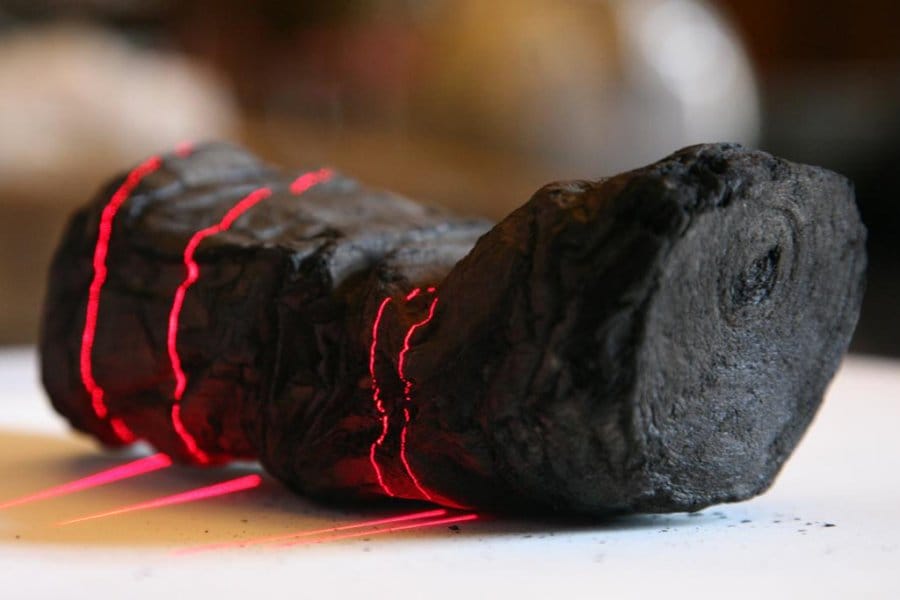
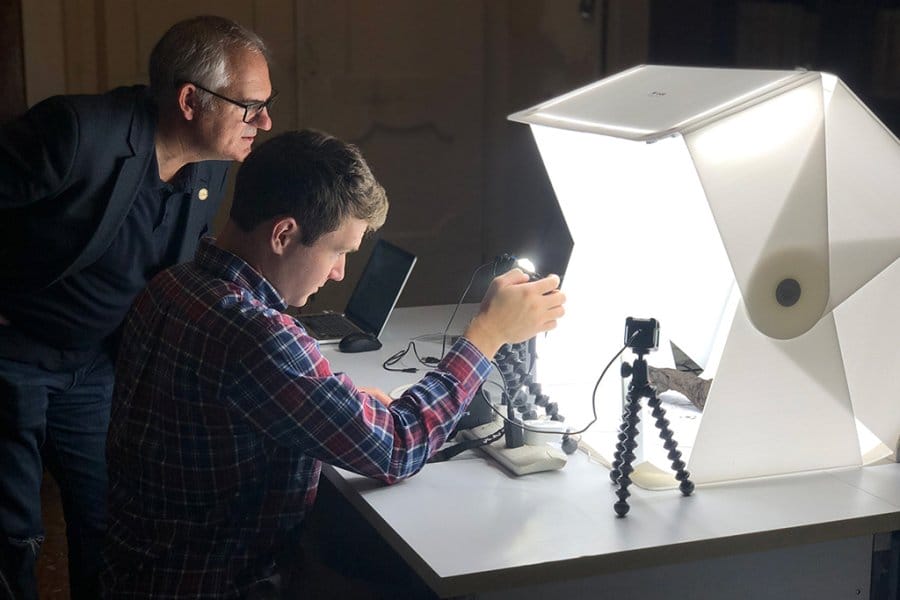
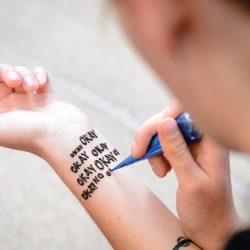
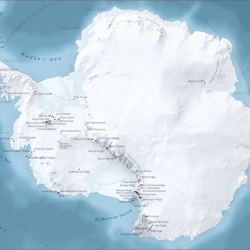
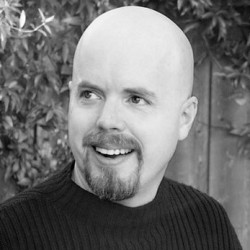
Comments
Scott Davis December 1, 2024
The most fascinating article I have read in years!!
Gordon Govier December 2, 2024
Genius!
Paul Brehmer December 9, 2024
This story is an excellent example of dedicating effort and using emerging technology in a good way to expand human knowledge.